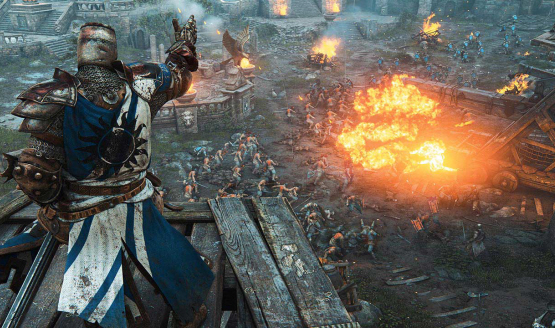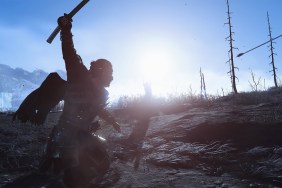War is ultimately part of the nature of humanity. There are many causes as to why it occurs, be it greed or differing ideals, and it often brings out both the best and worst of mankind all at once. Combat being at the core of everyone is one of For Honor‘s main ideas, and it’s why samurai, knights, and vikings are all duking it out in Ubisoft’s latest major release.
Since For Honor is tied to fighting both mechanically and thematically, it’s only fitting that the game’s combat is its brightest area. Button mashing won’t get you far in the game, as defense and blocking is just as important as a solid attack. The game strikes a great balance in its action by allowing players to use the right analog stick to change their stance into three separate positions, which is essential for both deflecting and landing a mixture of light and heavy attacks. Every strike matters here, and Ubisoft Montreal have managed to create a satisfying combat loop where every kill feels earned.
Due to the amount of nuance that For Honor packs beneath its Deadliest Warrior-esque veneer, it’s essential that the game is able to communicate its complex mechanics to the player. Thankfully, the game does a great job of introducing both the basics of gameplay, and more advanced strategy, by having a solid tutorial and videos that can be viewed while viewing each of the game’s 12 characters. Much like a fighting game, each warrior has their own quirks to them, and learning the ins-and-outs of your enemy is just as important as knowing your own abilities on the battlefield.
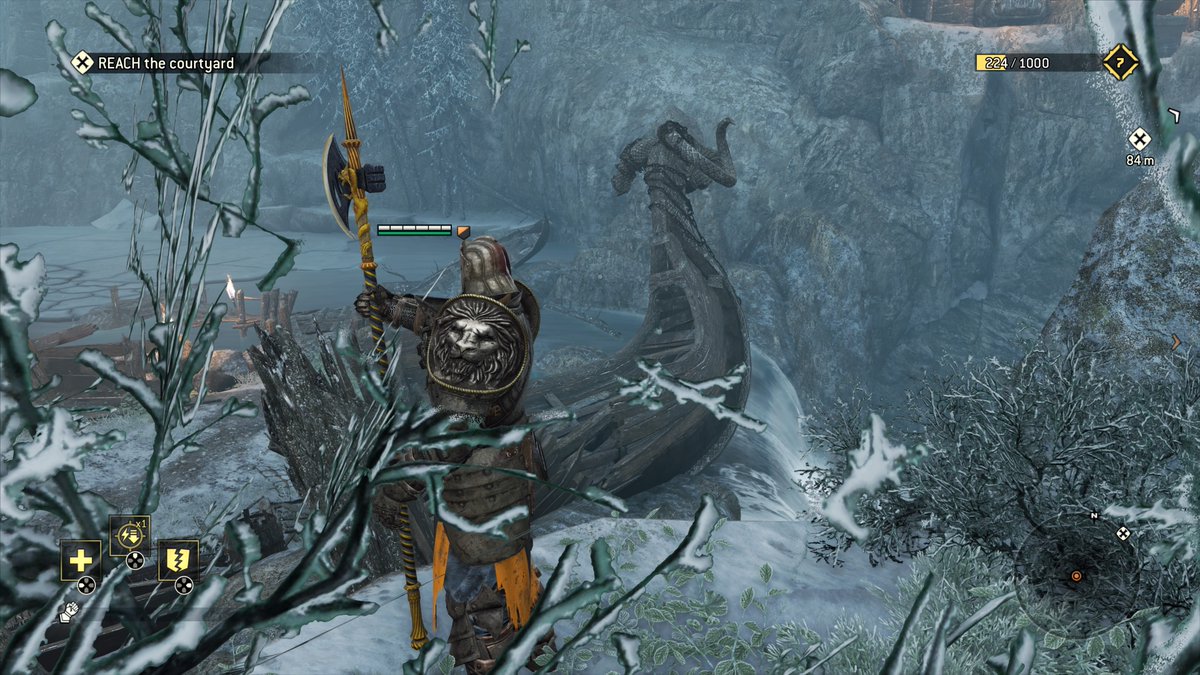
Chosen Ones
For Honor‘s single-player story mode also serves as a rather lengthy tutorial, as it has players jumping around from class to class as they learn about this fantasy world that is seemingly only inhabited by warriors. The heavily tutorialization works both to the campaigns favor and disadvantage. It serves as a great way for the player to learn the ropes, but it also is held back by the fact that players will still be seeing help prompts for the roughly 10 hours the 18-mission story lasts.
Those looking for a meaningful story from the campaign will be pretty disappointed, as For Honor struggles to have much of a a message beyond “war is actually bad.” Despite the weak writing (and a groan-worthy ending), the game does succeed in providing some pretty awesome set-pieces and cutscenes. From using an elephant to destroy enemy machinery to chasing down a fleeing officer on horseback, there’s plenty of memorable moments that won’t be seen in the multiplayer gameplay. The single-player also allows players to use abilities more freely than in multiplayer, which meant that I could disable enemy blocking with a push of the d-pad. This basically made all but the final boss a breeze to defeat on normal (although there are two additional difficulties for players to check out).
While the high spots are certainly awesome to watch unfold, most of the campaign isn’t nearly as inspired. There’s a lot of repetitive battles as the campaign introduces concepts that are used in multiplayer, such as capturing points and helping soldiers storm a battlefield. Since most levels are also teaching the player how to play a particular class, For Honor struggles to build upon the mechanics it introduces. For example, a shield bash that is the key to using one character effectively may be completely absent the next chapter. This makes it nearly impossible to really get into a groove while playing the story. The campaign is certainly a solid effort, but it’s pretty unsatisfying seeing the credits roll after learning all of the mechanics.
Looking Down the Cross
The campaign might have left me wanting more, but it also did a fantastic job of getting me ready for the multiplayer. This is clearly where Ubisoft expects most players to spend the bulk of their time, and they’ve separated the action into five modes. The most straightforward ones are the game’s Duel (one-on-one) and Brawl (two-on-two) modes, which has players fighting to the death over five rounds. I found these modes to be the most fun, as they really boil down the game to its most basic qualities, and I find it thrilling to test my skills against an opponent. I preferred the Duel mode over brawl, as the latter tends to be a race to see who can get the first kill, as it then becomes a two-on-one battle. Seeing most matches devolve into a handicap match isn’t enjoyable, and it wasn’t even fun to win in that fashion.
One of the main issues with For Honor‘s combat that is only exposed in multiplayer, is that it’s designed around taking one enemy on at a time. When two or more officers surround a character, it’s basically game over. So a lot of the strategy becomes avoiding such situations, although they will inevitably happen during matches. It’s actually so easy to kill an officer that is already battling someone, that I didn’t even have to lock-on to them to kill them. I could just hammer on the heavy attack button, and all of the work that Ubisoft did to create a technical system came crashing down.
This issue pops up all over the game’s other modes, which are four-on-four contests. For Honor seems at odds with itself, as it wants players to be technical yet the simple strategy of overcrowding is the most effective. This really hurts the two deathmatch modes, Skirmish (which has teams battling to get to 1,000 points) and Elimination (round based game with no respawns), as they essentially come down to seeing what team can section off members and kill them the most times. Despite typically loving modes that kill players permanently after a single death, I didn’t like Elimination. This is due to the mode still allowing players to revive teammates, and it forces players to camp at the site of a player’s death if they don’t want them to be revived. It doesn’t help that revives happen very quickly, and it really hurts the meaning of a death. Frustratingly, both of these modes are on the same playlist, so I often had to play Elimination despite wanting to play Skirmish.
The final mode is Dominion, which I talked about extensively when I previewed the closed beta. It’s an enjoyable mode with a lot of AI-controlled grunts, and it revolves around capturing points on each map. While getting ganged up on is certainly an issue here, the UI also ends up negatively playing a factor. It can be very difficult to see which stance an enemy is in when there are dozens of soldiers fighting around you, and the screen becomes a mess if both teams are over 1,000 points and trying to end the game (as every character gets pictured on the sides). This means that the UI gets in the way at the most important moments of a match (take a look at this screen for an example).
On top of all of the modes, there’s also a persistent meta-game going on where players are able to take territories over for their faction of choice. The reason why players would want to compete in this is because they’ll get various gear and symbols that they can use to customize their character. Besides visual customization, players will also be able to buy stat-changing armor with in-game (or real) currency. This type of gear doesn’t have a huge impact on how a character plays, and it’s only available for the four-on-four modes (which leaves Duel and Brawl to be entirely skill-based). I don’t mind the gear system, as it at least gave me a good reason to play multiplayer matches, and I was able to make my warrior slightly more powerful by tweaking his stats to my liking.
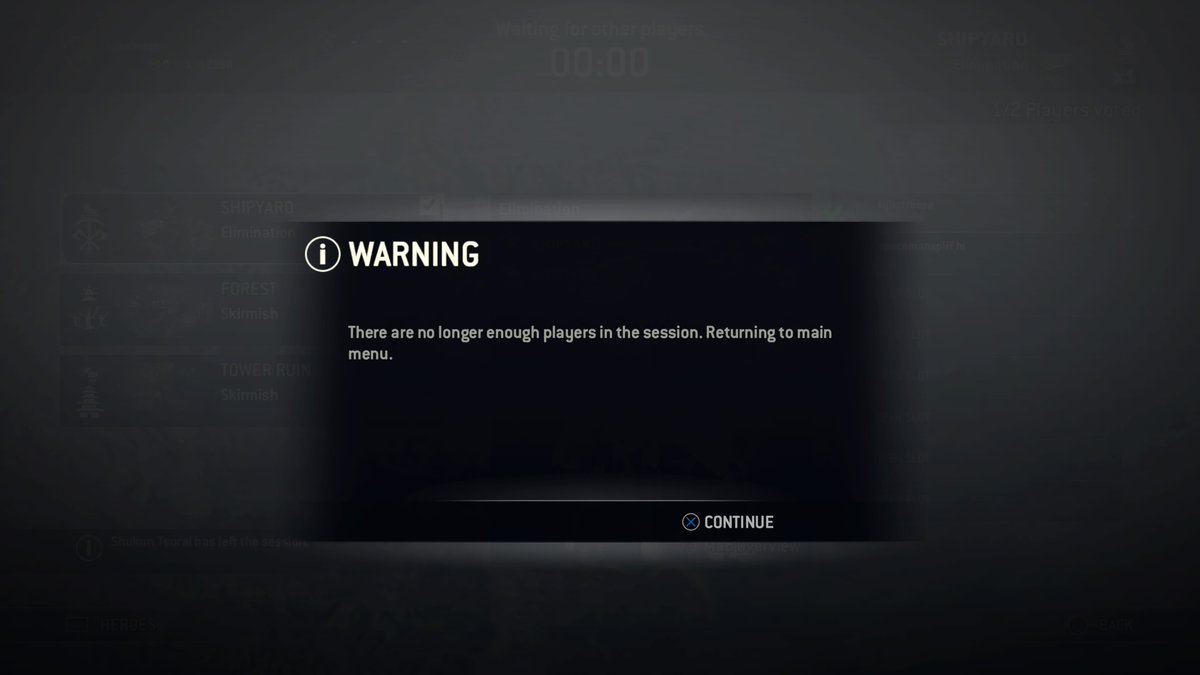
Last Rites
The most disappointing part of For Honor has been how poor the matchmaking has been. I regularly found myself in matches where I would start off with computer-controlled teammates. Considering For Honor multiplayer matches are relatively small (it’s four players on each side), it’s rather ridiculous that the game couldn’t find three other humans for me to play with. Sometimes these bots would get replaced midway through a match, but oftentimes they stayed the entire time and put my side at a disadvantage. One particularly bad case had both teams have bots in Domination, the game’s main mode.
On top of becoming all too familiar with Ubisoft’s artificially controlled partners, I also found myself on the receiving end of a lot of matchmaking errors. This would often occur after a match had ended, and the game was supposed to carry players into another game. After voting on a map, and waiting for over a minute, I’d get a screen telling me there weren’t enough members in the session and it’d break the group apart instead of waiting for one more player to join. Simply getting into a match can feel like a hassle at times, and that ends up providing a really poor user experience.
Judging by how Ubisoft has handled support for past multiplayer games (like Rainbow Six Siege), I’m confident that some of For Honor‘s issues will get rectified down the line. Gameplay can be tweaked, matchmaking enhanced, and better modes can all be added over time. However, as the game stands right now it’s more of a proof of concept than a fully realized idea. There’s a great base to build upon mechanically, but it’s too rough around the edges to shine as bright as it should.
Review code for For Honor provided by publisher. Reviewed on PS4 Pro. For more information on scoring, please read our Review Policy here.
-
Combat is filled with nuance
-
Plenty of unlockables
-
Looks great
-
Poor matchmaking
-
Lackluster campaign
-
Modes are hit-or-miss
For Honor info dump
-
For Honor - Everything You Need to Know
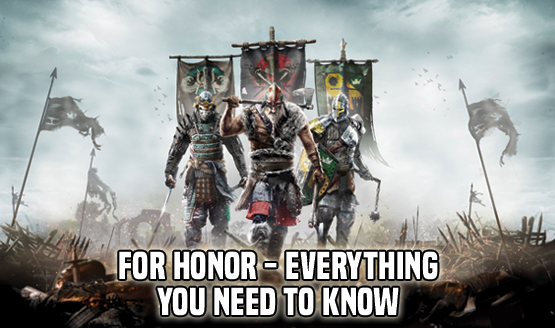
Cancel those Valentine’s plans; For Honor is looming large on the horizon, and to ensure you’re fully prepped and ready to step foot on Ubisoft’s battlefield, here’s everything you could possibly need to know about the publisher’s new IP.
-
What is For Honor?
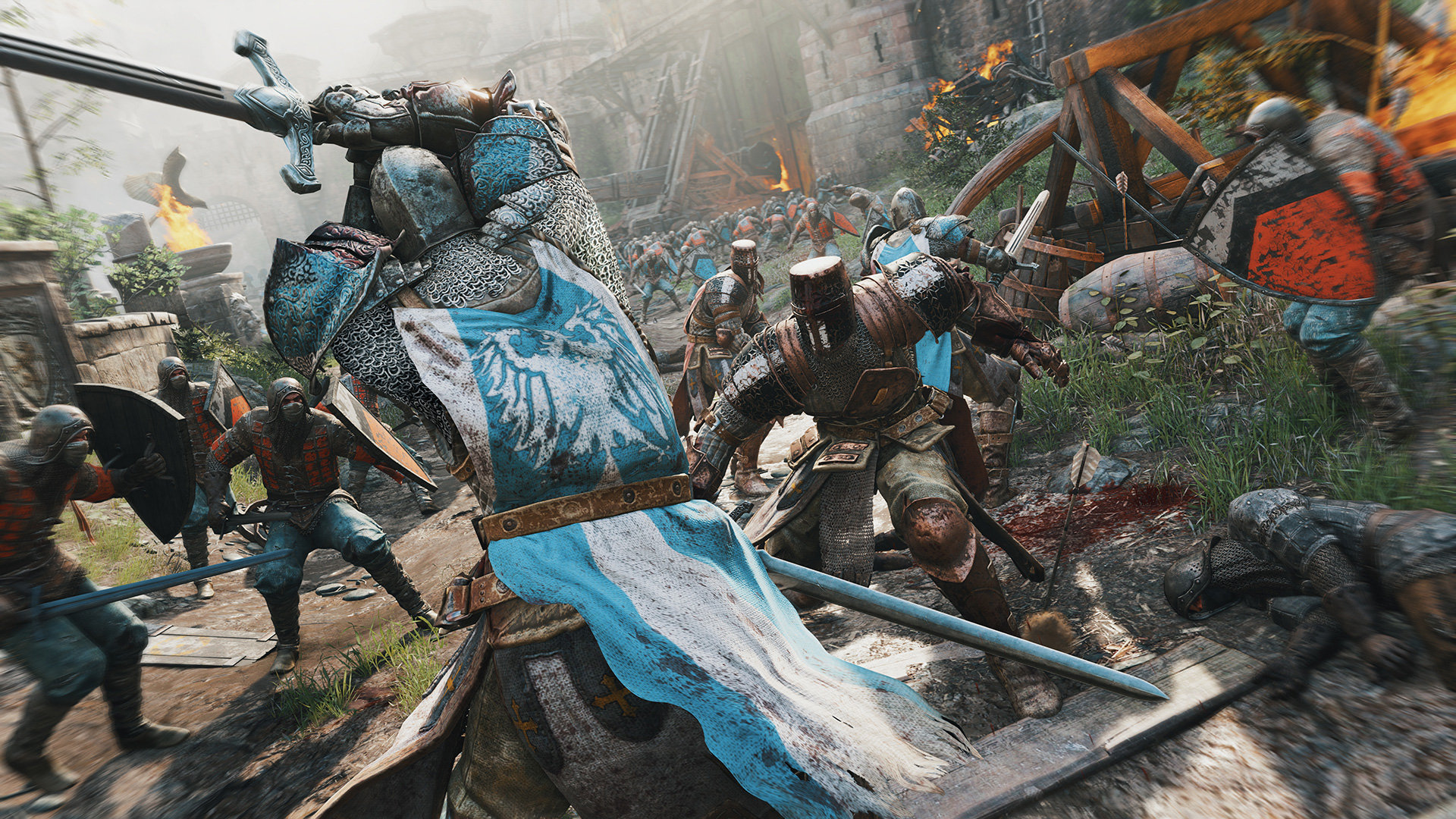
It’s Ubisoft’s budding new IP and one rooted in a medieval setting. For Honor also marks the publisher's first foray into the competitive realm of action-strategy, with players forced to swear allegiance to one of three factions: The Legion, The Warborn, and The Chosen
The battlefield awaits, soldier.
"Witness the bloody brutality of the battlefield as history’s most iconic warriors come face to face. Choose between the agile Chosen, the brutal Warborn or the brave knights of The Legions and fight for land and glory."
-
What’s the Story?
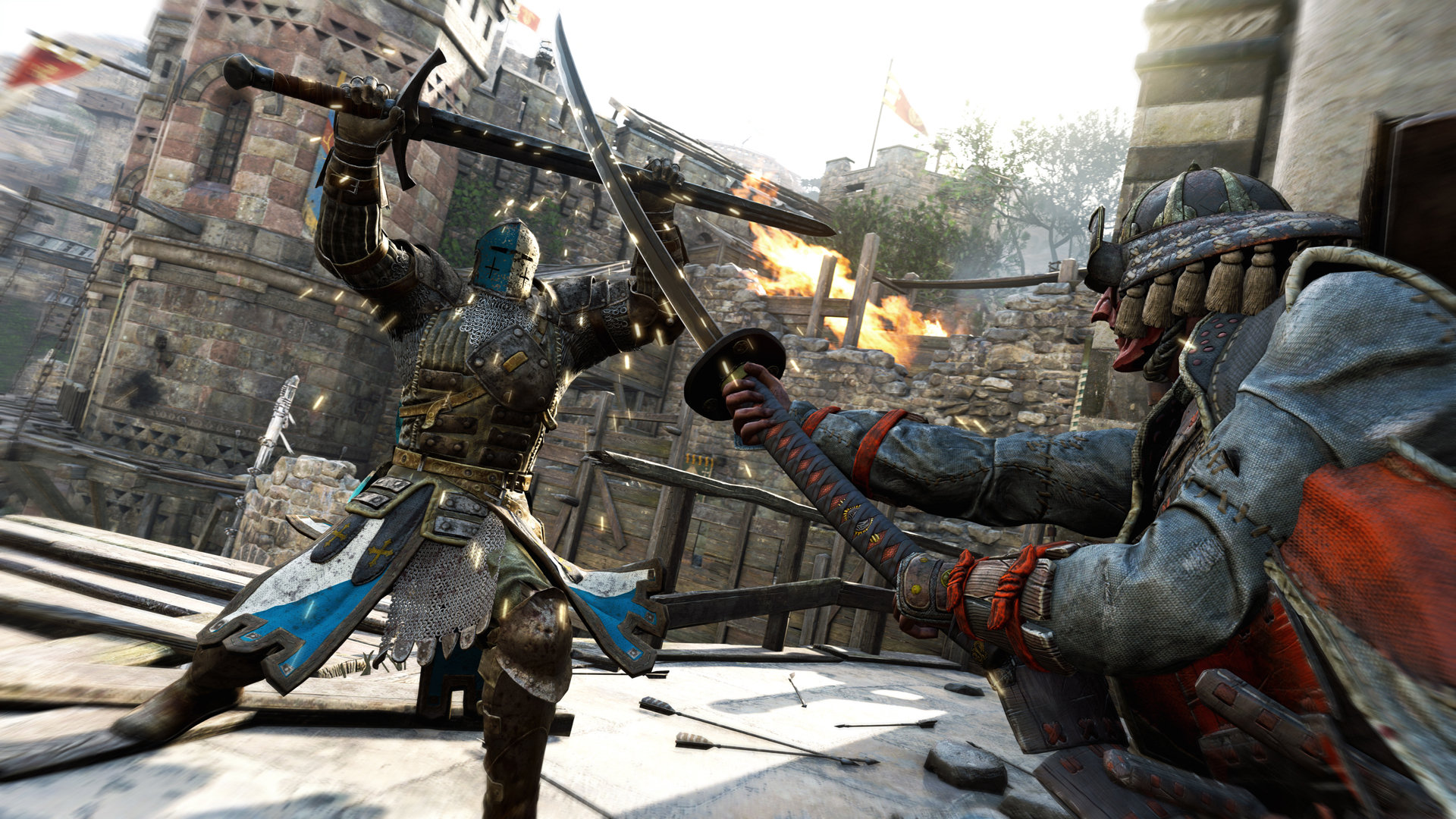
Set hundreds of years after a cataclysm brought the world to its knees, the enigmatic Warlord known as Apollyon has pitted the Knights, Vikings, and Samurai against one another. The fragile equilibrium that once existed between the three factions has been shattered, and in its wake spawns a full-blown war.
"The world of For Honor is harsh, yet filled with beautiful wildlands, grandiose landmarks, and majestic ruins. Its hardy inhabitants eke a living as they can in spite of living in a state of near perpetual war. A cataclysm struck a millenium ago, nearly destroying all civilizations. Homelands were sundered, empires burned, and whole nations exiled themselves. From the ashes of this catastrophe, the Knights, Vikings, and Samurai rose again. They struggled to rebuild their nations, trying to recapture the glory of their ancestors."
-
Always Online
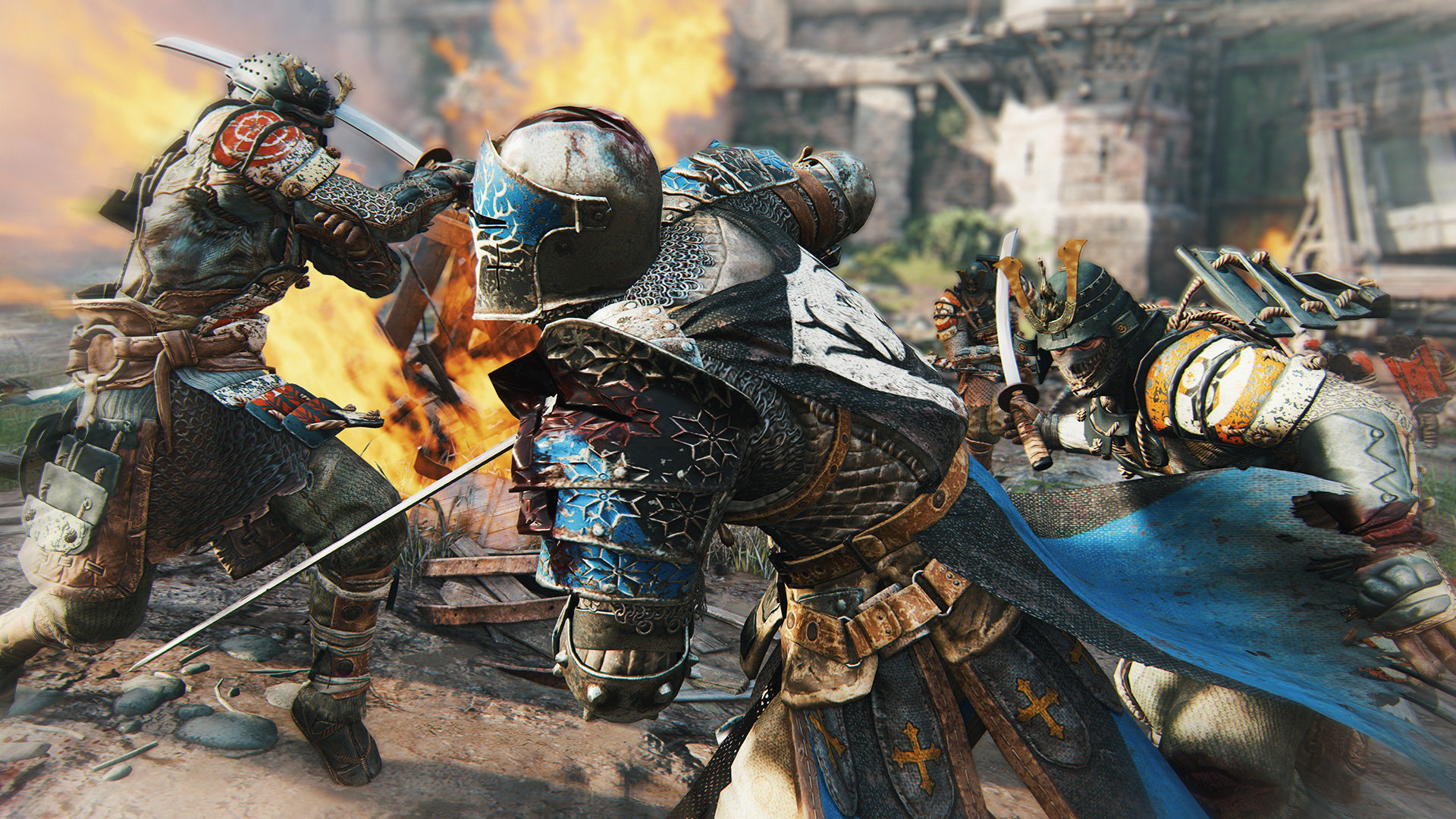
Despite boasting a single-player campaign, For Honor is an always online experience, much like The Crew and The Division before it.
"We can confirm that For Honor is an always online experience. Some elements of progression, which is hosted online, are shared across story and multiplayer modes. Players will need to be connected to the internet at all times to play For Honor."
-
How Does it Play?
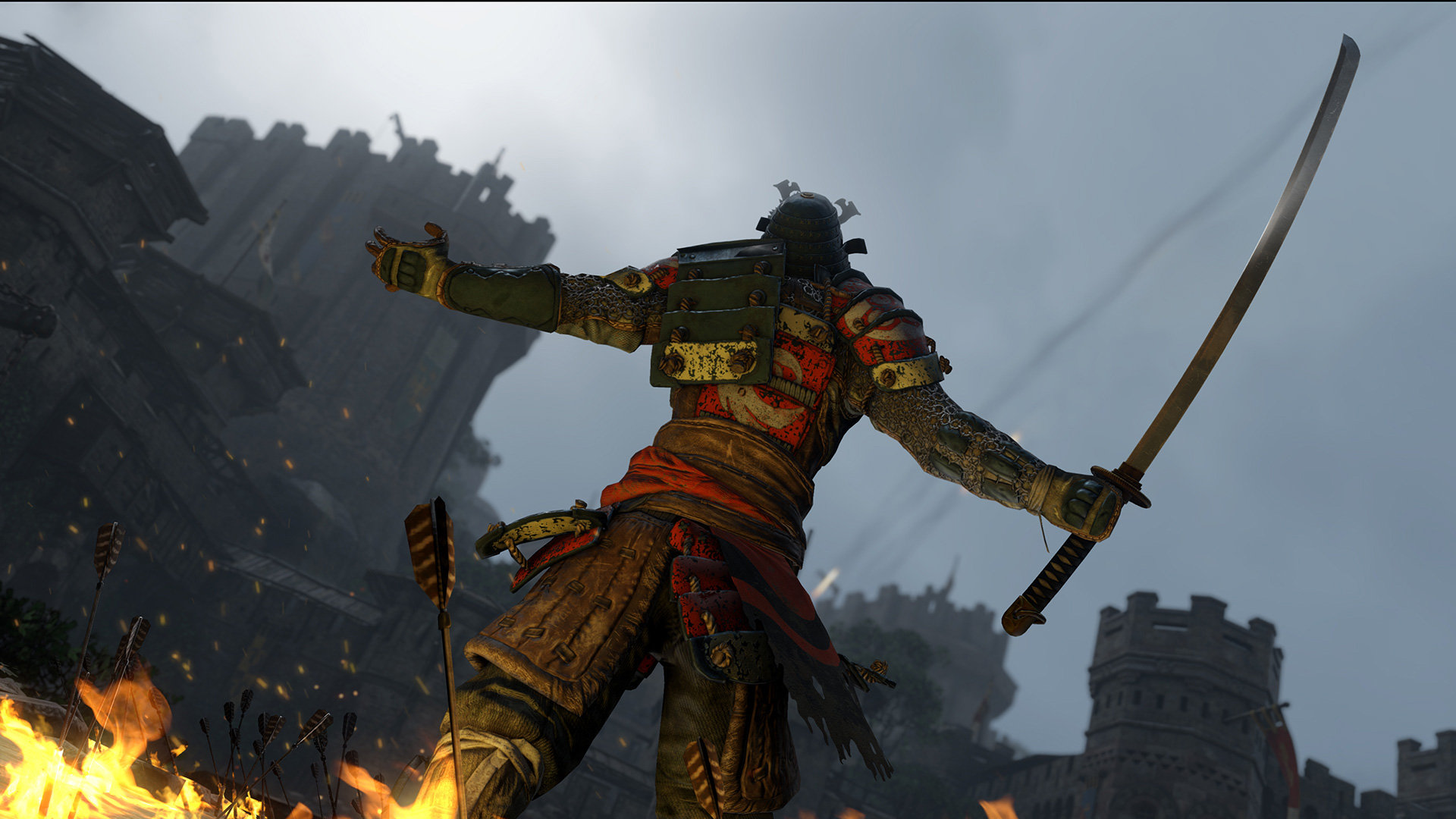
Tapping into an innovative battle system known as The Art of Battle, For Honor is a third-person action game at its core. The official description reads as so:
“Master a unique combat system designed to put you in full control of every, swing, block, jab and parry. For Honor's 'Art of Battle' system not only allows you to deal damage and dodge incoming blows, it also weights each individual action based on your footing, determining your ability to counter incoming attacks, exploit openings or sidestep an incoming blow.
"Every face-off will be a test not just of raw strength, but of skill, attention and timing, making every move decisive.”
-
A Showstopper
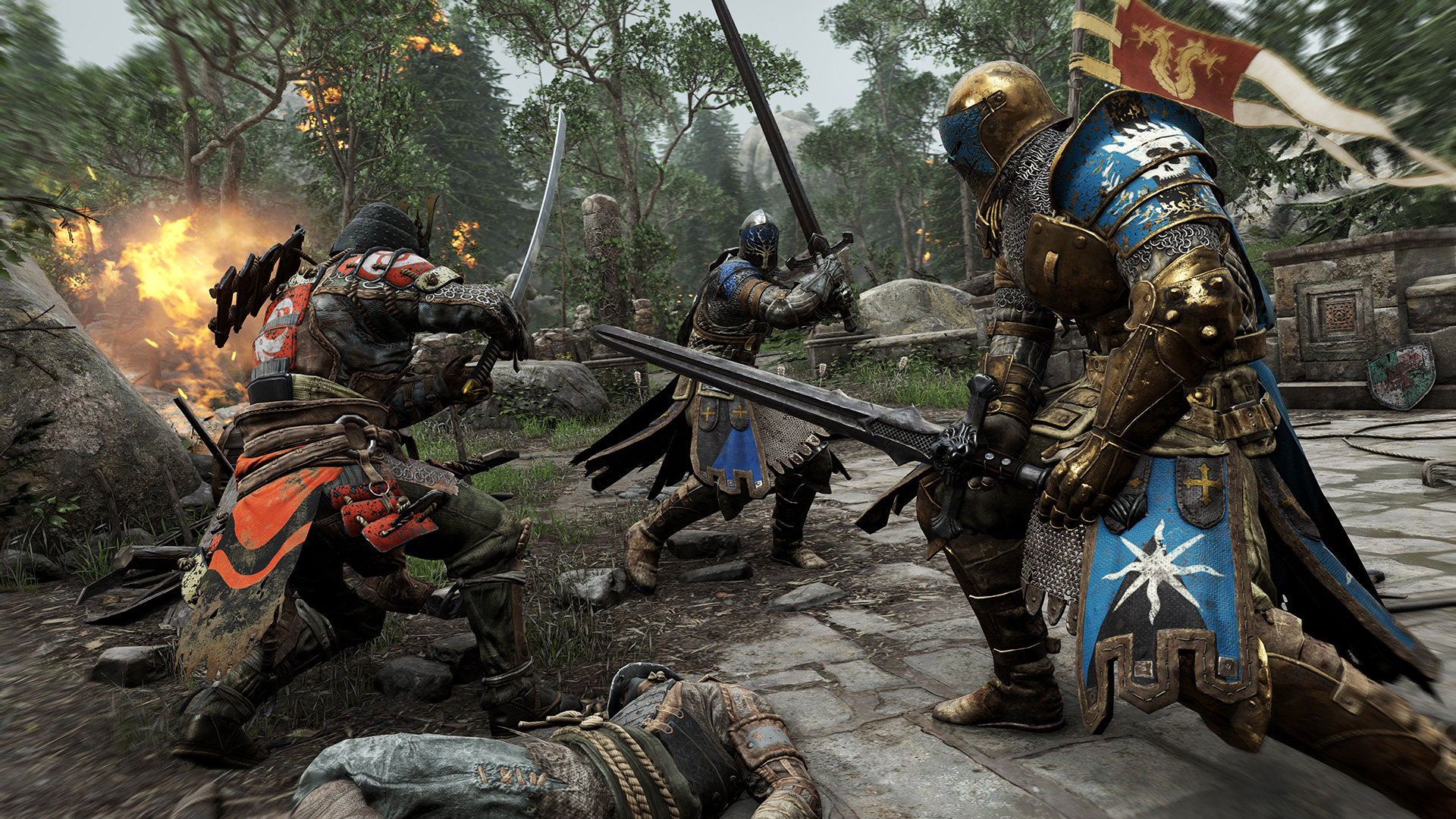
Part of the reason why For Honor initially captured the imagination at E3 2015 comes down to just how refreshingly new Ubisoft's IP is shaping up to be -- and we’re not just talking about the frankly awesome Jason VandenBerghe and his equally awesome cane.
Two years ago, we selected For Honor among our Best of E3 2015 Awards.
-
Reining in the Focus
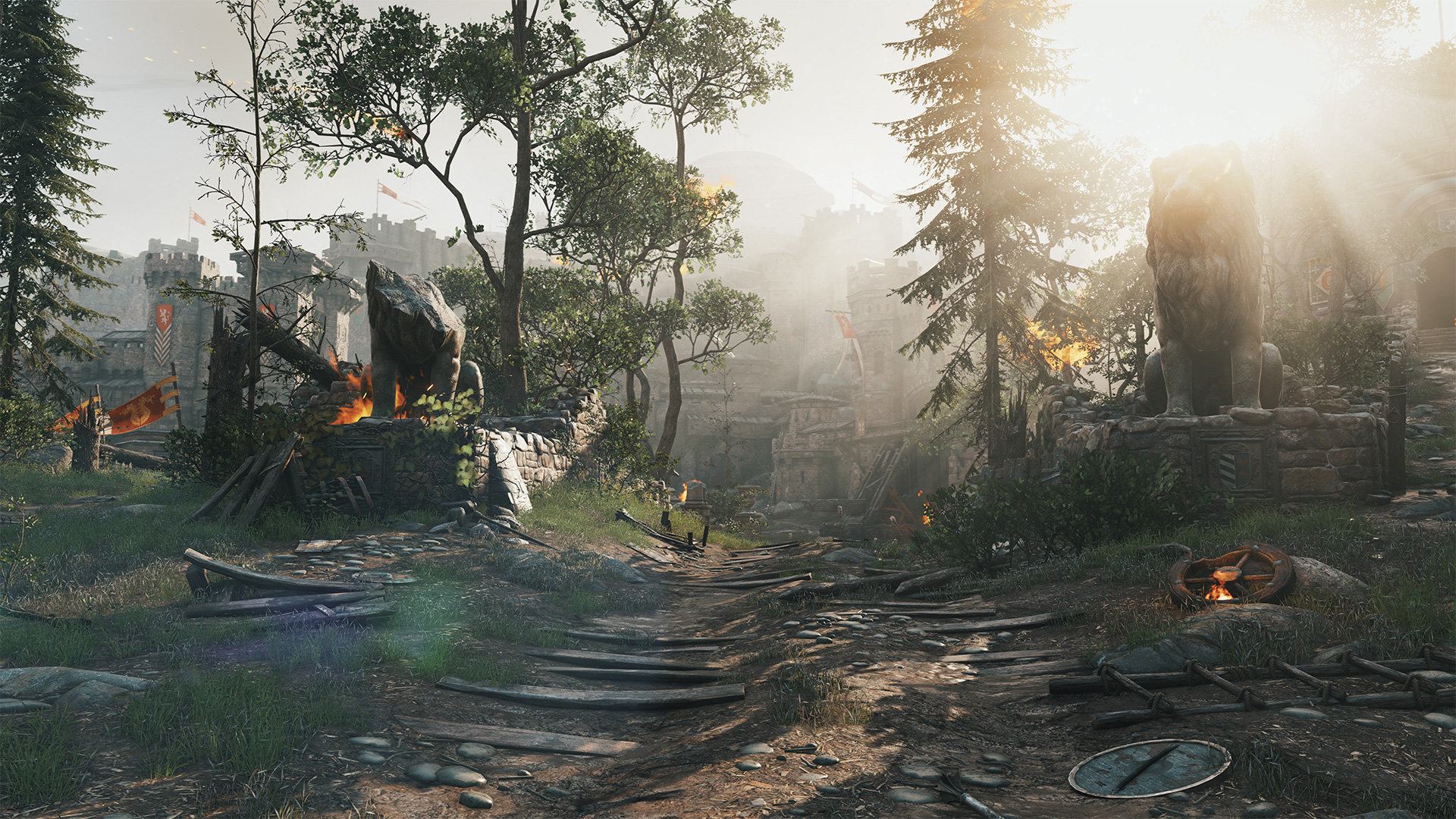
Despite labelling it to be a "super-required feature" at the outset, Ubisoft has opted to cut split-screen support from For Honor, stating:
"It was a feature that we loved, but when we looked at what needs to be done to support online co-op, for us it was critical to make the decision now so we can polish all the features at the Triple-A level and make sure that we have the most amazing experience."
-
Story Mode
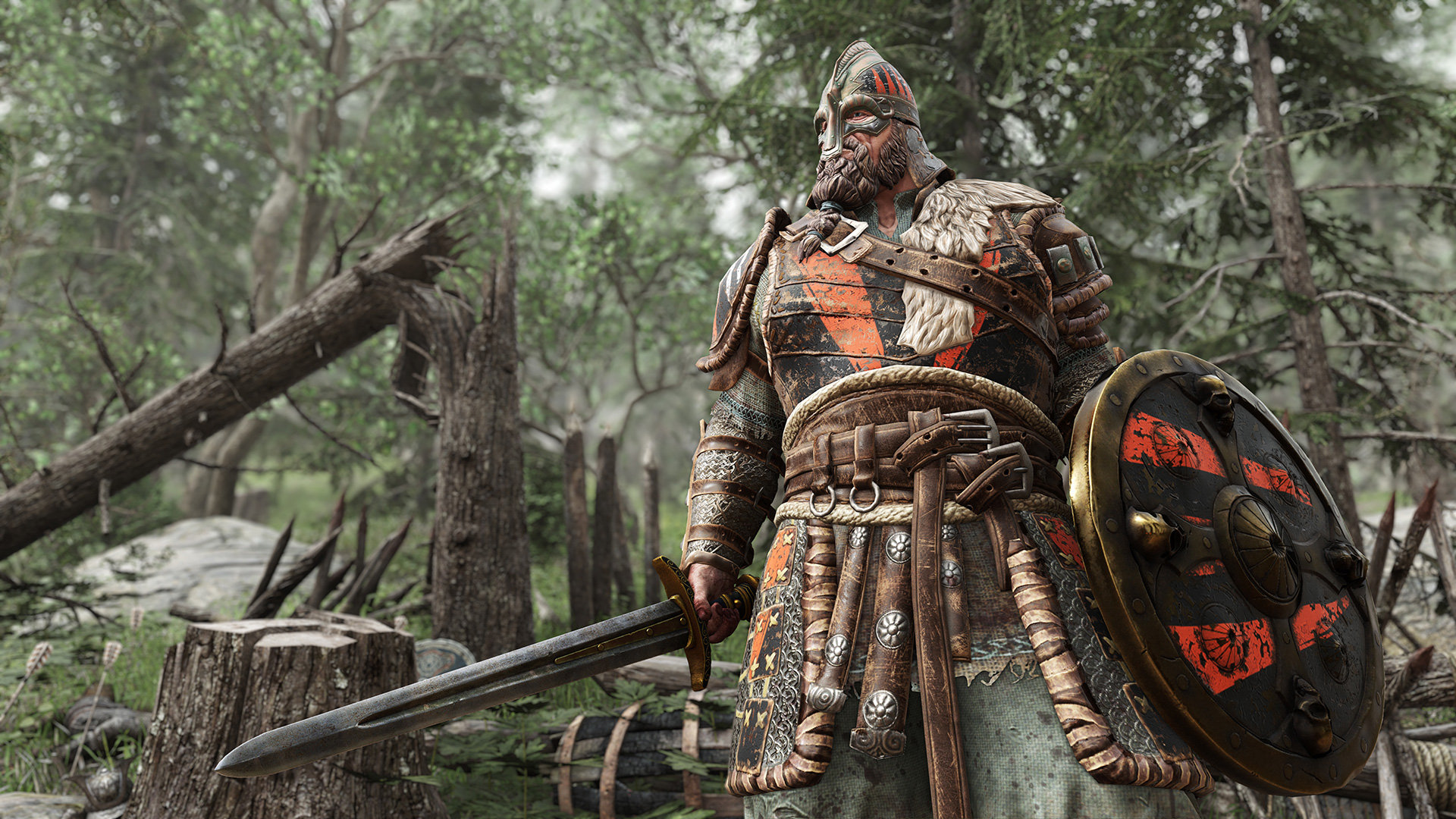
Much like the multiplayer experience, For Honor's single-player component will allow players to choose between the three factions. Depending on your choice, you'll either be fighting as The Orochi (Samurai), The Raider (Viking), or The Warden (Knight).
"Playable as single-player and two-player co-op, the For Honor story mode is an immersive tale of larger-than-life warriors plunged into one of the bloodiest wars between Knights, Vikings, and Samurai in recent history."
-
Five Primary Game Modes
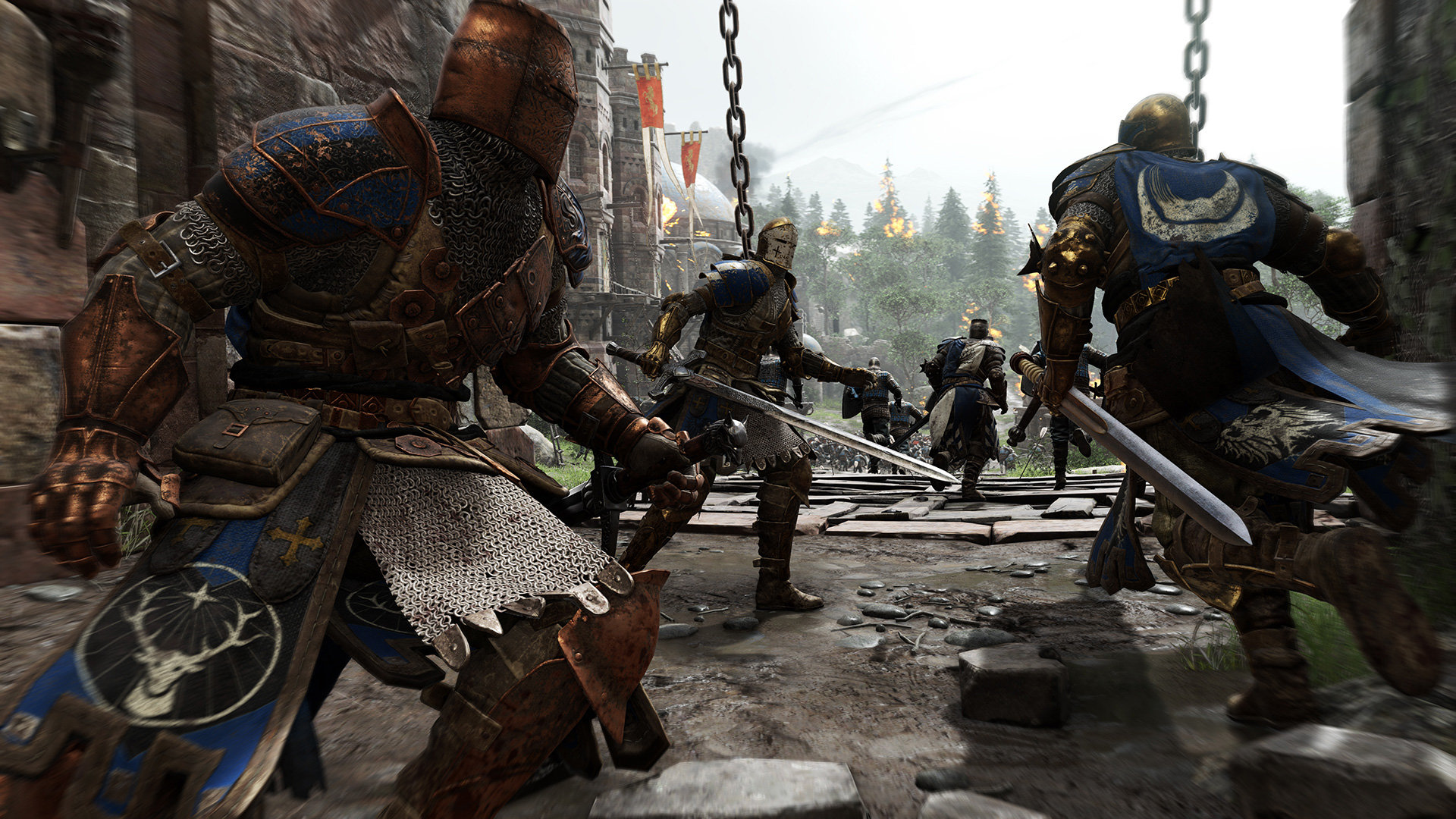
The five primary game modes of For Honor are described as so:
- Dominion: "In this 4v4 battle you must break the opposing team’s morale and then eliminate them. You do so by scoring points through killing enemies, capturing specific areas, and controlling them over time. Once a team reaches 1000 points, the opposite teams breaks and can no longer spawn unless they kill opponents or recapture areas. A team wins by killing the last hero of a breaking team."
- Duel: "Battle it out against a single opponent in a best of five-round fight in an arena! Use your mastery of your hero’s moveset to slay your opponent. You must do so without feats or radar to pinpoint your opponent’s position."
- Brawl: "This is a 2v2, best-of-five rounds battle to the death. Each hero spawns at a different point of the map. A team wins a battle when they’ve eliminated the last hero of the opposing team. There are no respawns."
- Skirmish: "Combat skills are key in Skirmish as you score points for your team by killing enemy Heroes. Each match ends with a climatic with a breaking phase when one team needs to wipe out all of the players on the other team to win the game!"
- Elimination: "Elimination is a best of five rounds 4v4 mode. There is no respawn and the player who is the last to survive on the battlefield wins the round for their team. It’s a mode full of tension where every fight matters – will you confront your direct opponent or coordinate with your team to storm together one enemy after the other?"
-
In-Game Arenas
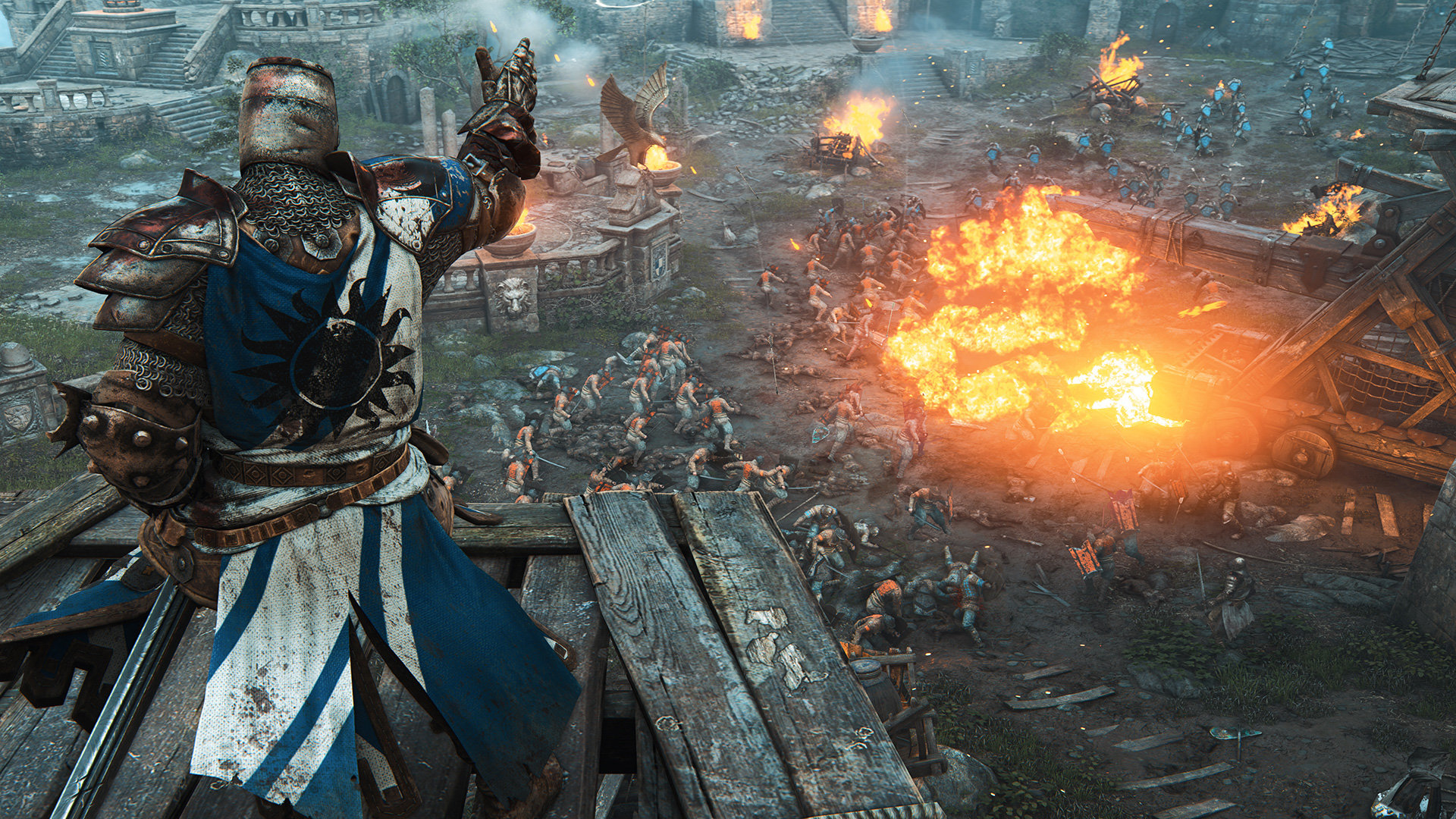
So far, Ubisoft has detailed three of the war-torn arenas to feature in For Honor. They include Citadel Gate, Overwatch, and River Fort for the Knights, Samusai, and Vikings, respectively.
-
Four Classes per Faction
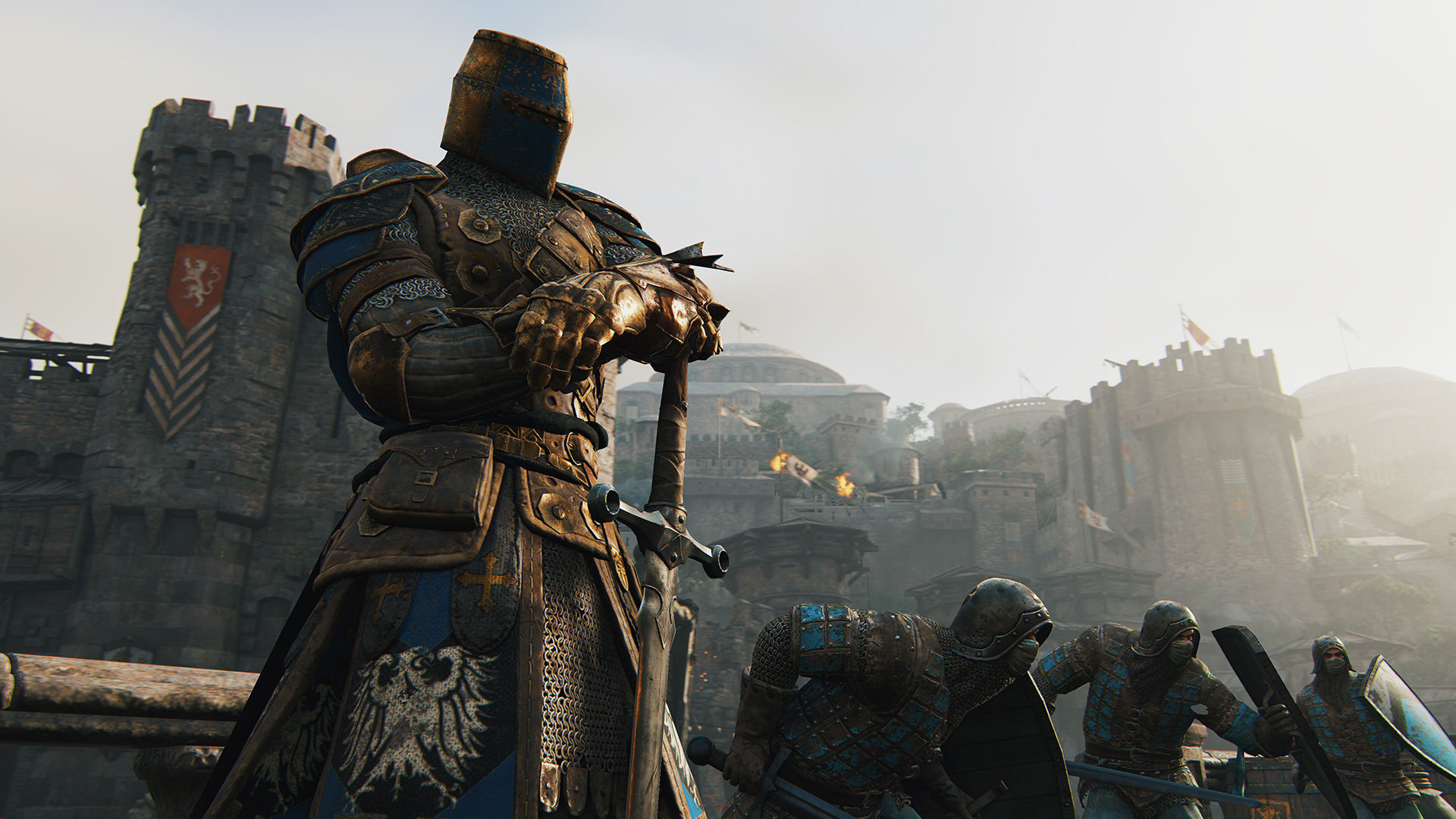
If the The Legion, The Warborn, and The Chosen represent For Honor's three principal factions, each of those groups boast four distinct classes: Vanguards, Assassins, Heavies, and Hybrids.
-
Open Beta
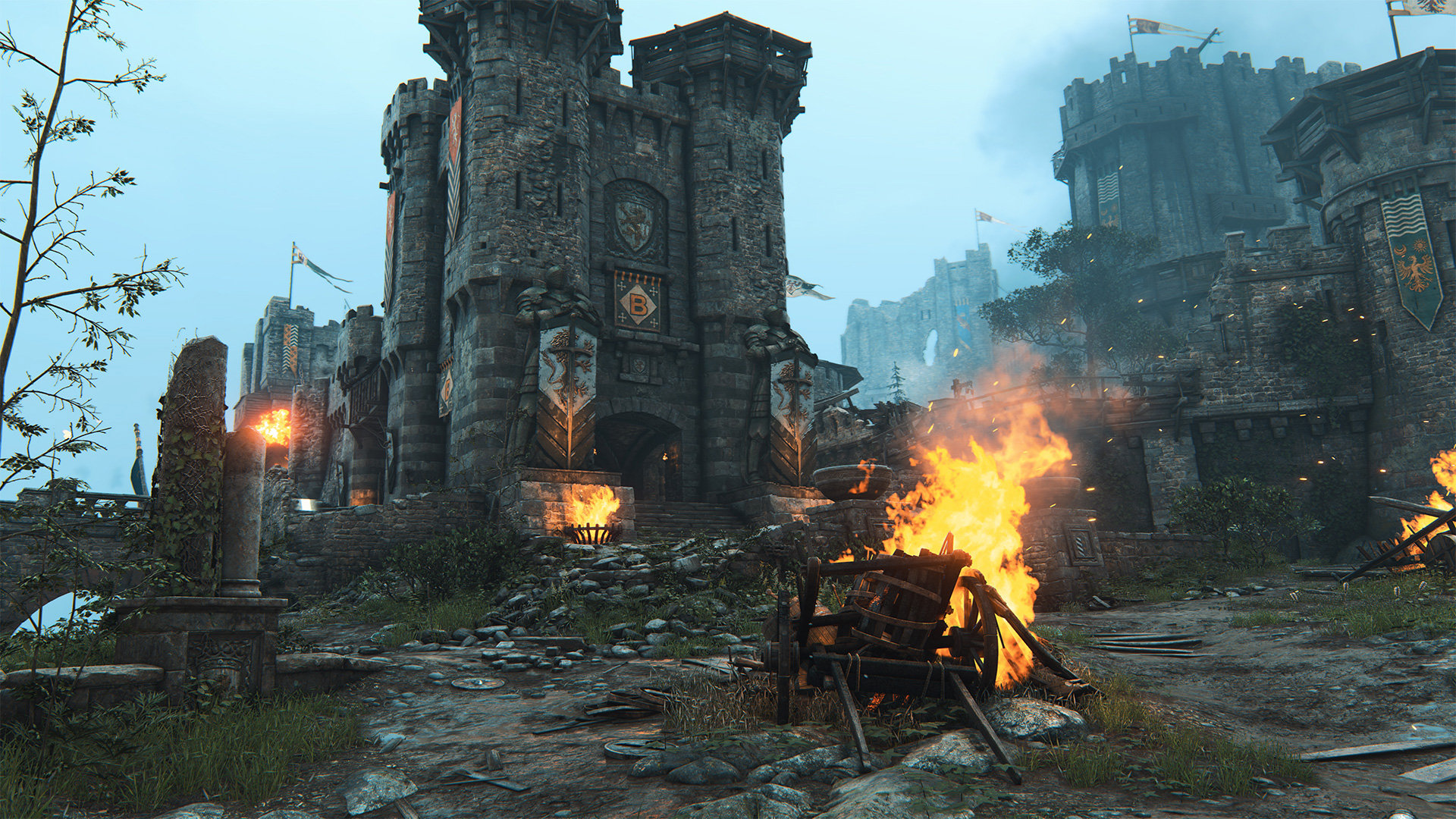
For Honor's Open Beta is, at the time of writing, still live. It'll continue through until February 12, which goes some ways to explaining why Ubisoft decided to hold fire on review copies.
“This Open Beta comprises a limited portion of the game and is a work in progress – it’s not the full nor the final game. For Honor will include more Heroes, more modes – including a full-fledged story mode, more maps and more features when the game launches on February 14th, 2017.”
-
War of the Factions
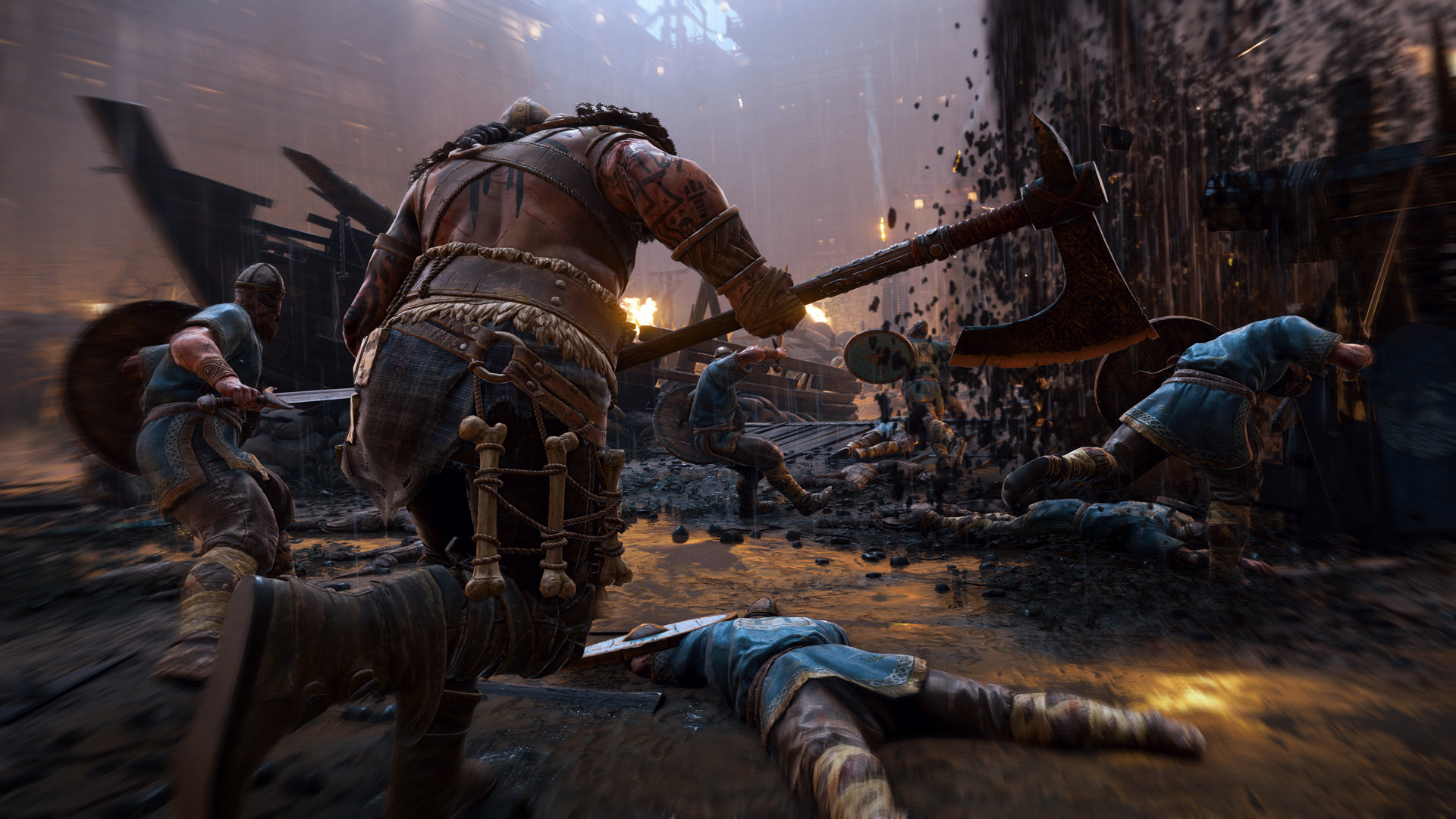
A limited-time event, War of the Factions, will also take place during the Open Beta.
Per Ubisoft:
"The battlefield will be reset from Closed Beta. Now, everyone has a chance to fight for ultimate victory and Reign Supreme. Only those who fight for the winning faction in the Open Beta will reap the ultimate reward. Prepare for the Open Beta, which will run from February 9th to 12th."
-
Clueless Gamer, the Super Bowl Edition
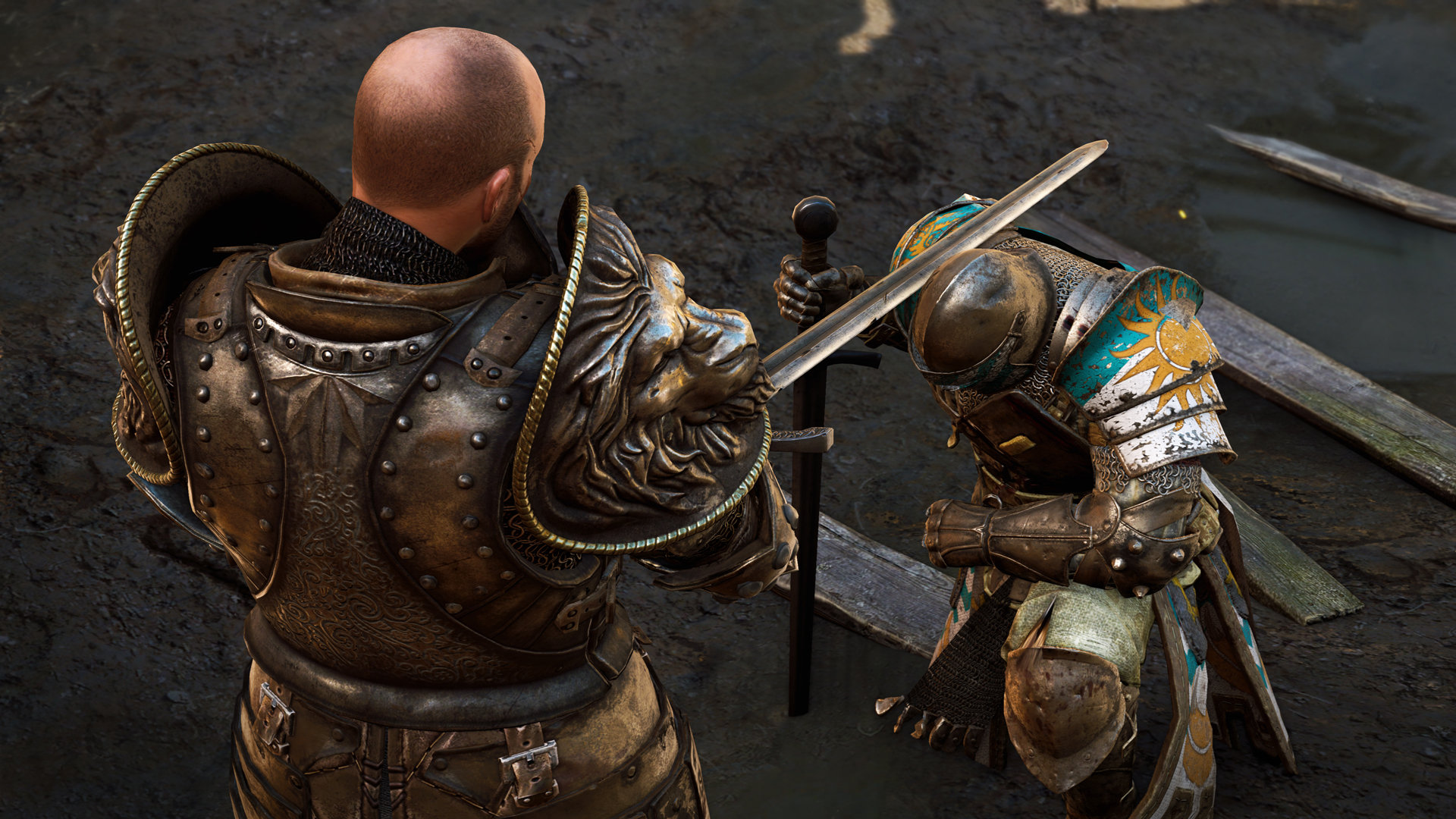
Airing just before Super Bowl LI, Conan O' Brien, Tom Brady, and Dwight Freeney took For Honor out for a test drive in a recent edition of Clueless Gamer. Hilarity ensues.
-
Season Pass
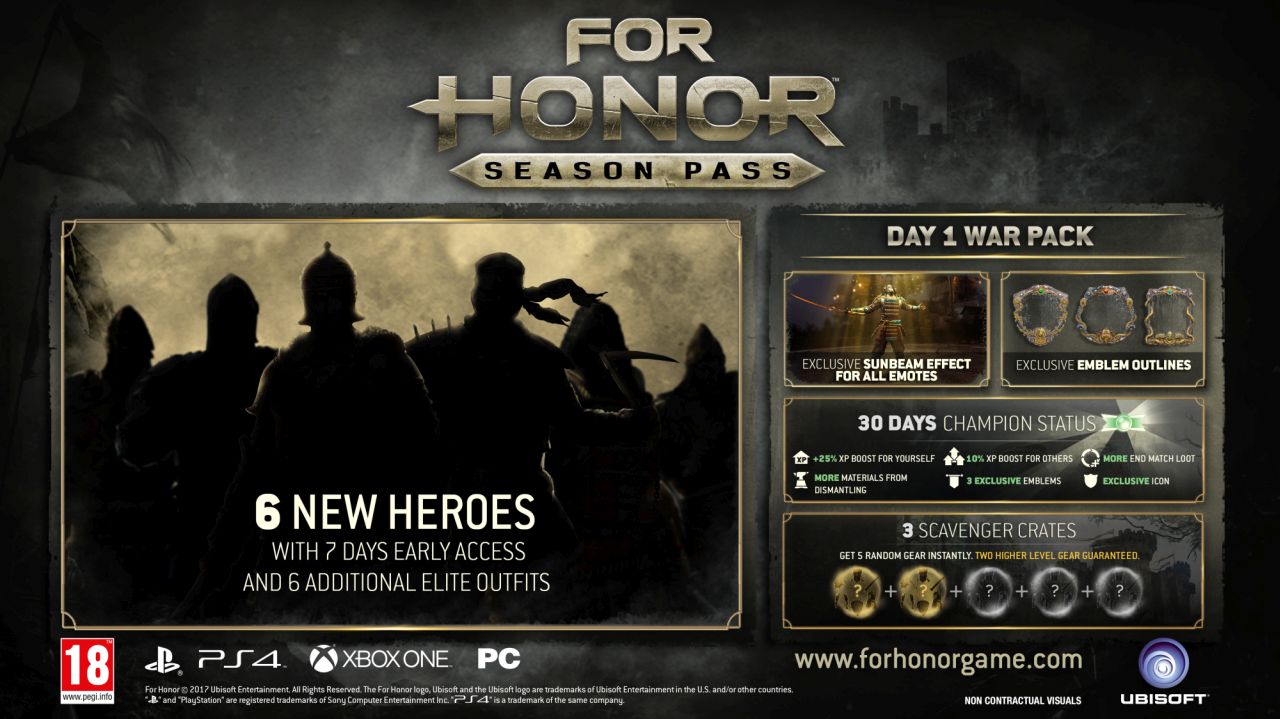
Expected to be priced around the $40 ballpark, the For Honor Season Pass bundles together:
- Six all-new Heroes available seven days before released to all players.
- Six elite outfits to customize the new Heroes.
- Day One War Pack.
- One exclusive sunbeam effect on emotes for all Heroes.
- Three exclusive emblem outlines.
- Three scavenger crates to unlock additional gear.
- 30-day Champion Status that gives XP boosts to friends, more XP from crafting and additional end-match loot.
-
Free Post-Launch Maps and Modes
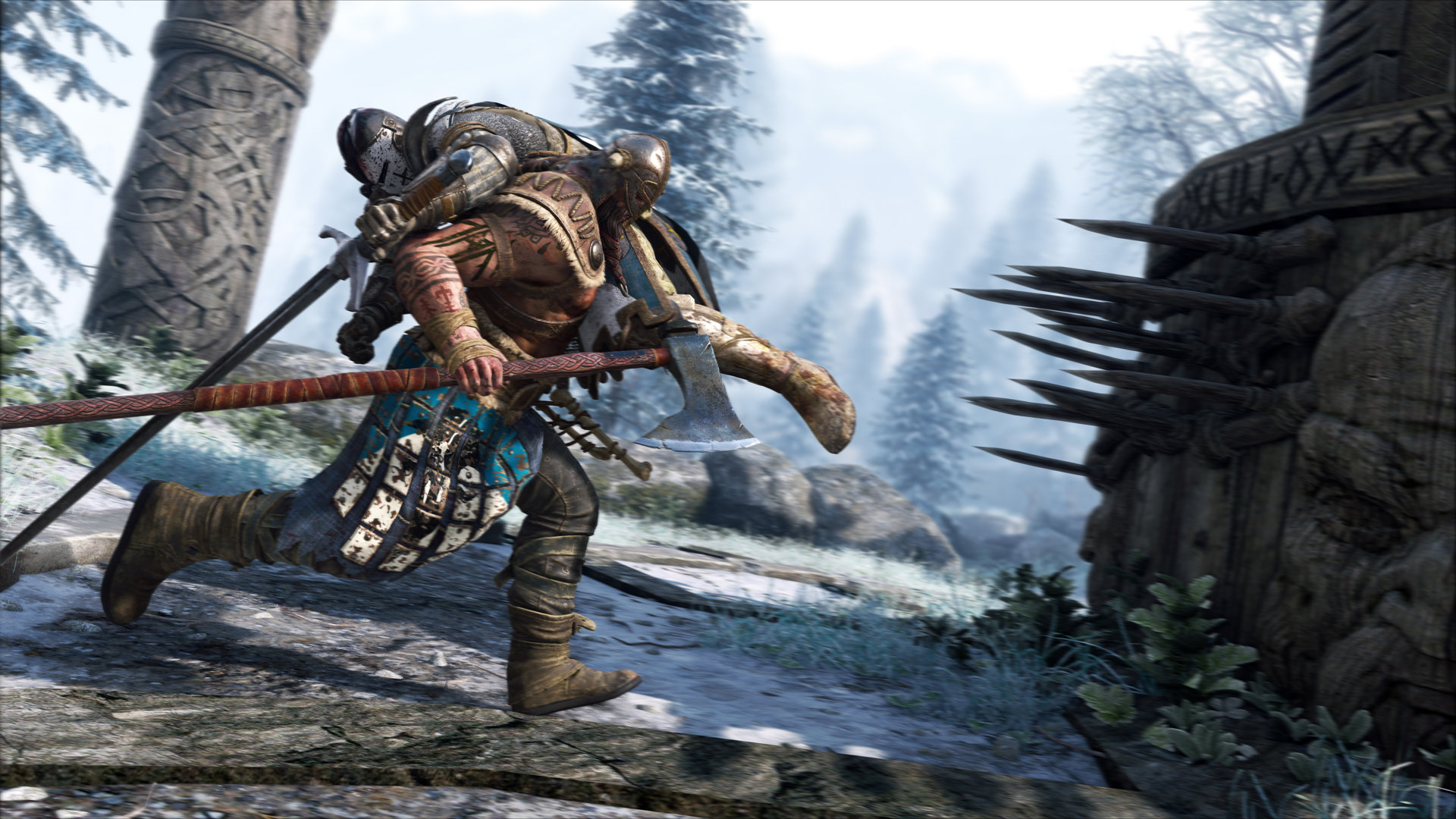
In outlining For Honor's post-launch support, Game Director Damien Kieken stressed that new modes and maps will be added free of charge.
“So everything that’s matchmade [including] new modes and new maps, will be given for free to the players. We’ll also have other free content. We are a big team supporting the game after launch.”
-
Introducing Steel, For Honor’s In-Game Currency
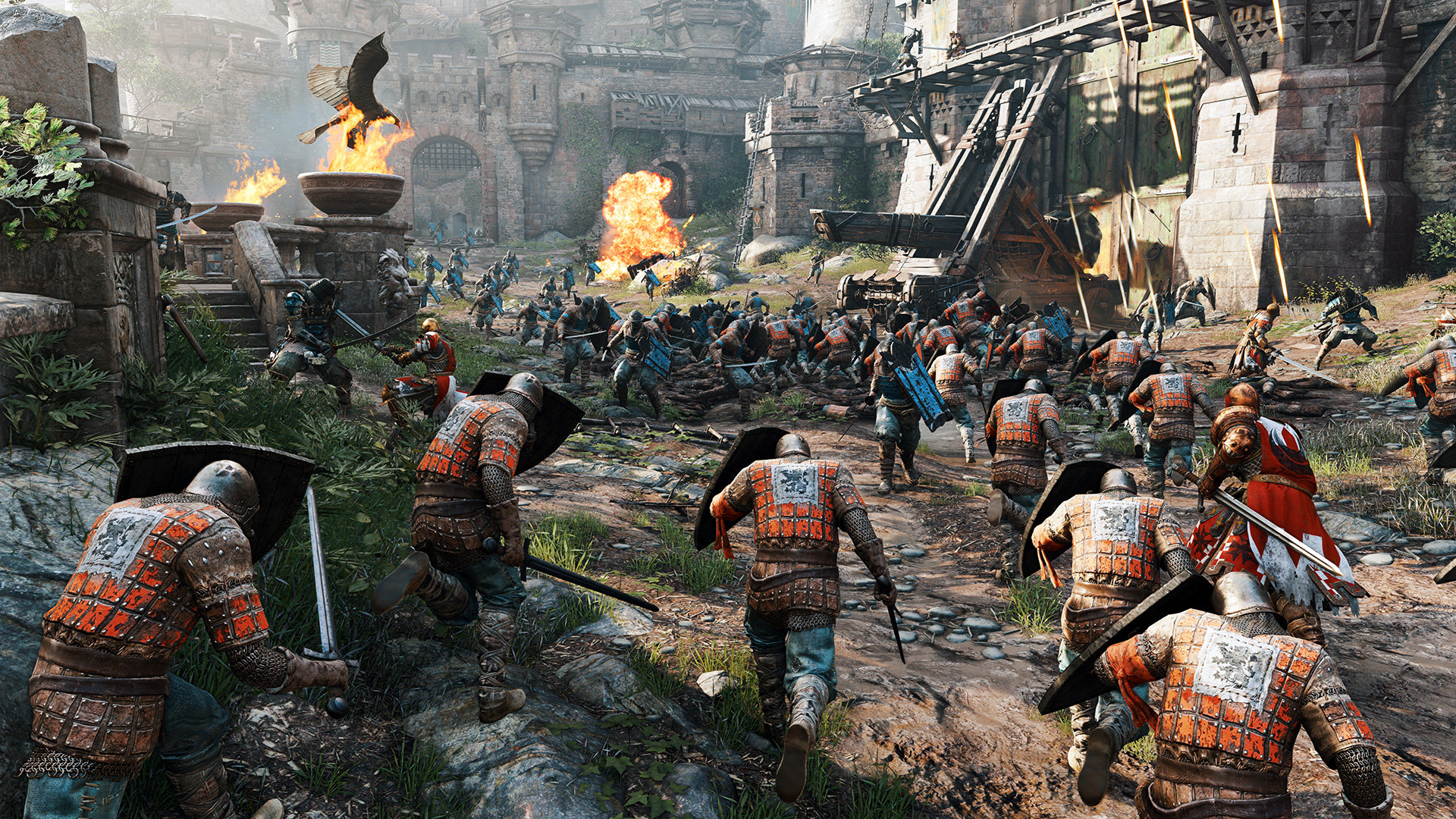
Despite offering free DLC after launch, For Honor will feature microtransactions. The in-game currency is known as Steel and, much like Rainbow Six Siege before it, players will be able to unlock new characters via currency earned in-game, or by purchasing additional Steel via real money.
When quizzed about this approach to monetization, Game Director Damien Kieken said:
“It’s just a shortcut. Everything is unlockable just by playing the game. And all shortcuts are tied to progression, so you can’t unlock an end-game item right away.”
-
Digital Version
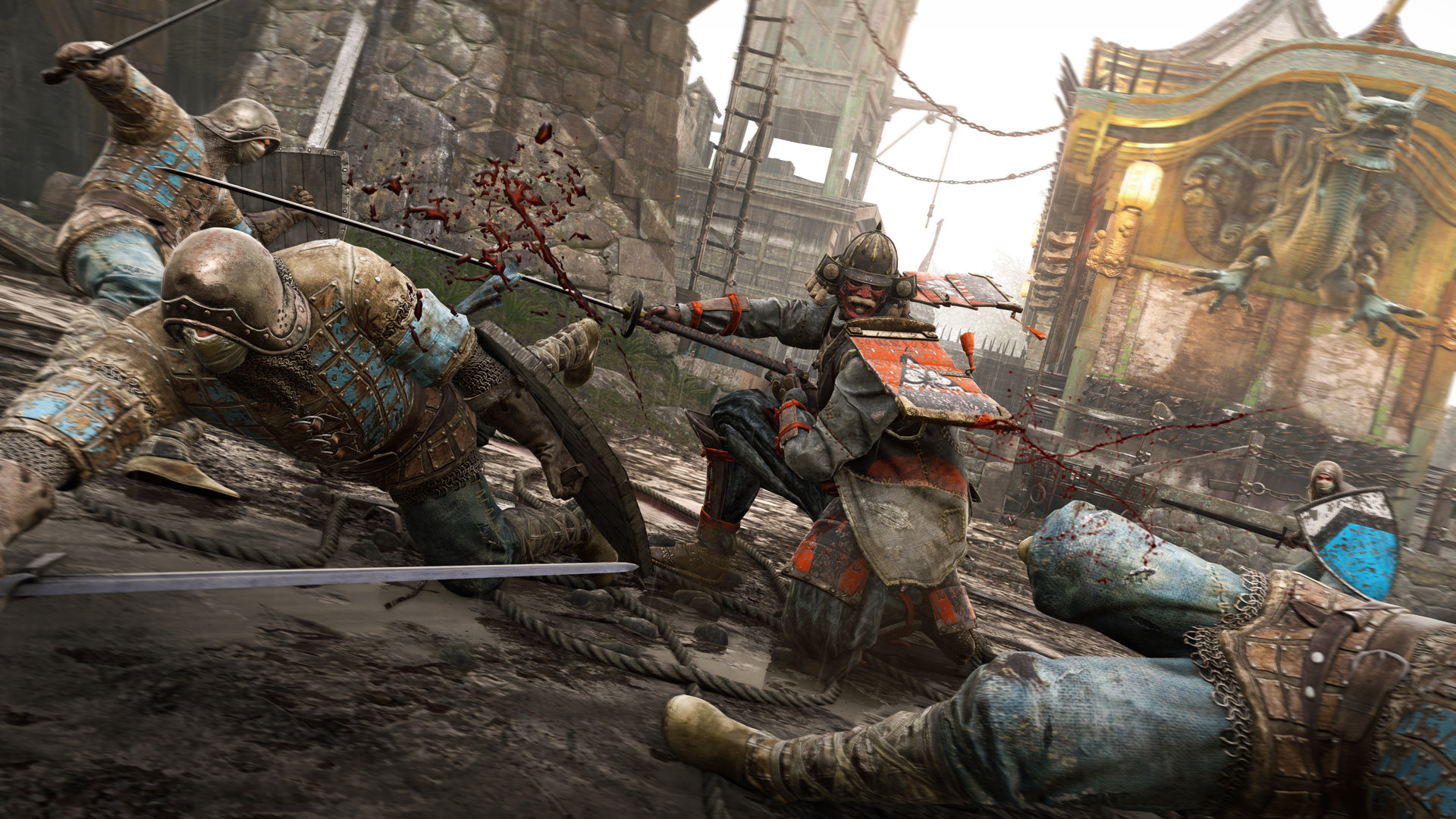
According to the EU PlayStation Store, the digital version of For Honor requires at least 35GB of free space on PS4.
-
Gold and Deluxe Editions
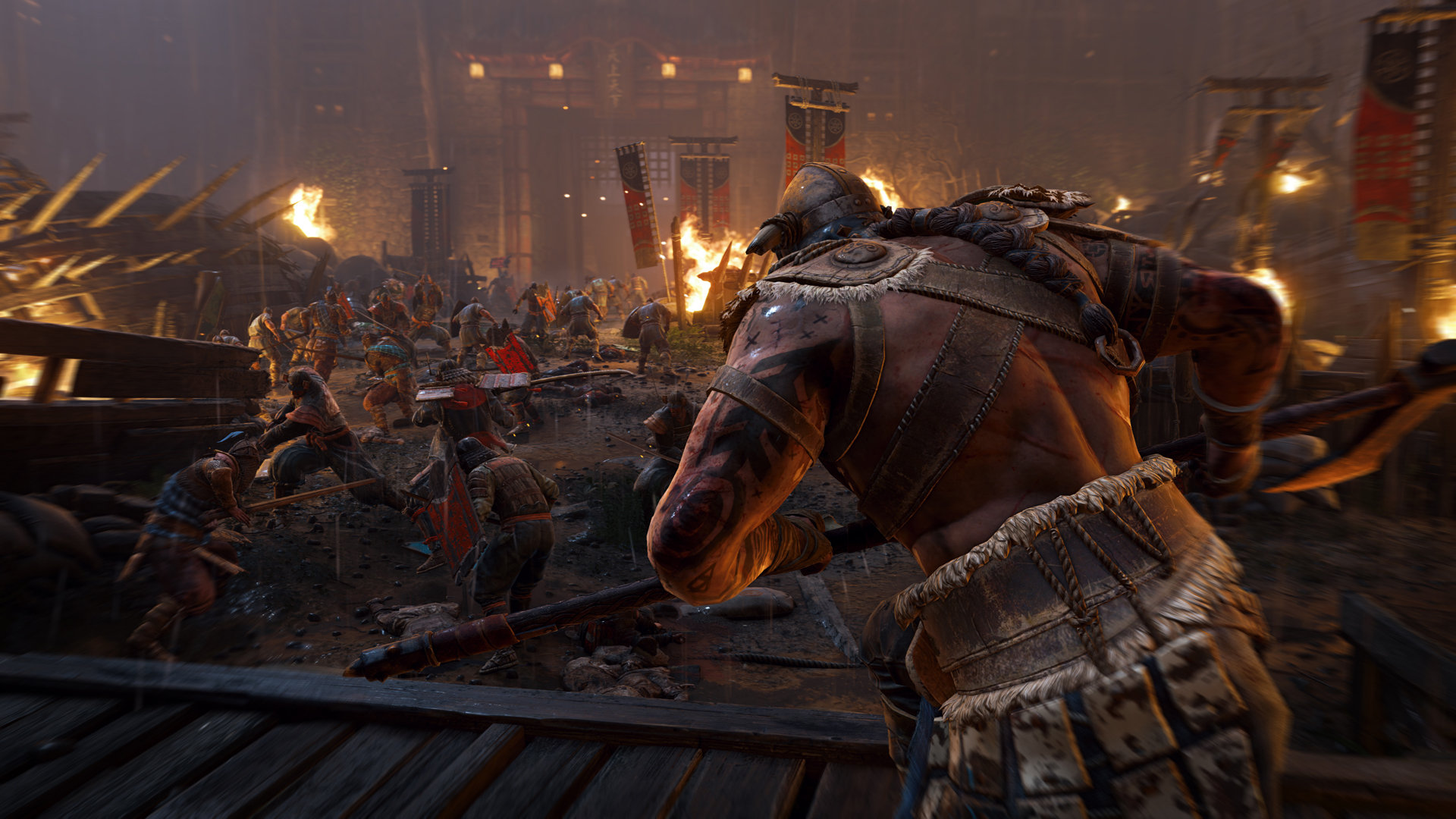
In addition to the Apollyon bundle, there's also the Gold and Deluxe editions of For Honor to consider.
Full details below:
Deluxe Edition ($69.99): “Get your greasy gauntlets on the Legacy Battlepack, featuring three exclusive hero outfits - one for each warring faction - along with exclusive, day-1 content included in the Deluxe Pack. All these extras will be unlocked from the minute you load-up along with a full standard copy of the game.”
Gold Edition ($99.99): “Get the ultimate taste of all-out medieval combat with the For Honor Gold Edition. Not only does this edition include the Legacy Battlepack - with three exclusive outfits - and the day-1 Deluxe pack, you'll also the For Honor season pass. The season pass will give access to new content and add-ons due to be released throughout the coming year.”
-
GameStop’s Collector’s Edition
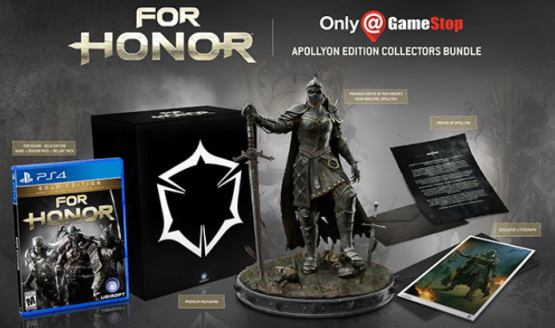
Curious to learn more about For Honor's premium package? Priced at $219.99 USD, the GameStop-exclusive Collector's Edition bundles together enough goodies to make even Apollyon recoil with jealousy.
- For Honor Apollyon Collector’s Edition
- For Honor Gold Edition
- 14″ Apollyon Statue – Standing at over a foot tall, this highly-detailed statue features an accurate reproduction of Apollyon, For Honor’s main Warlord.
- Exclusive Apollyon Lithograph – The Warlord of the Blackstone Legion seeks to bring war to her enemies in this exclusive Limited Edition Lithograph.
- Origins Note – Go deeper into the battlefields of For Honor as you uncover Apollyon’s previously untold origins. What secrets lie in the past of the Blackstone Legion’s mysterious leader?
- Premium Collector’s Edition Packaging
-
Extended Gameplay
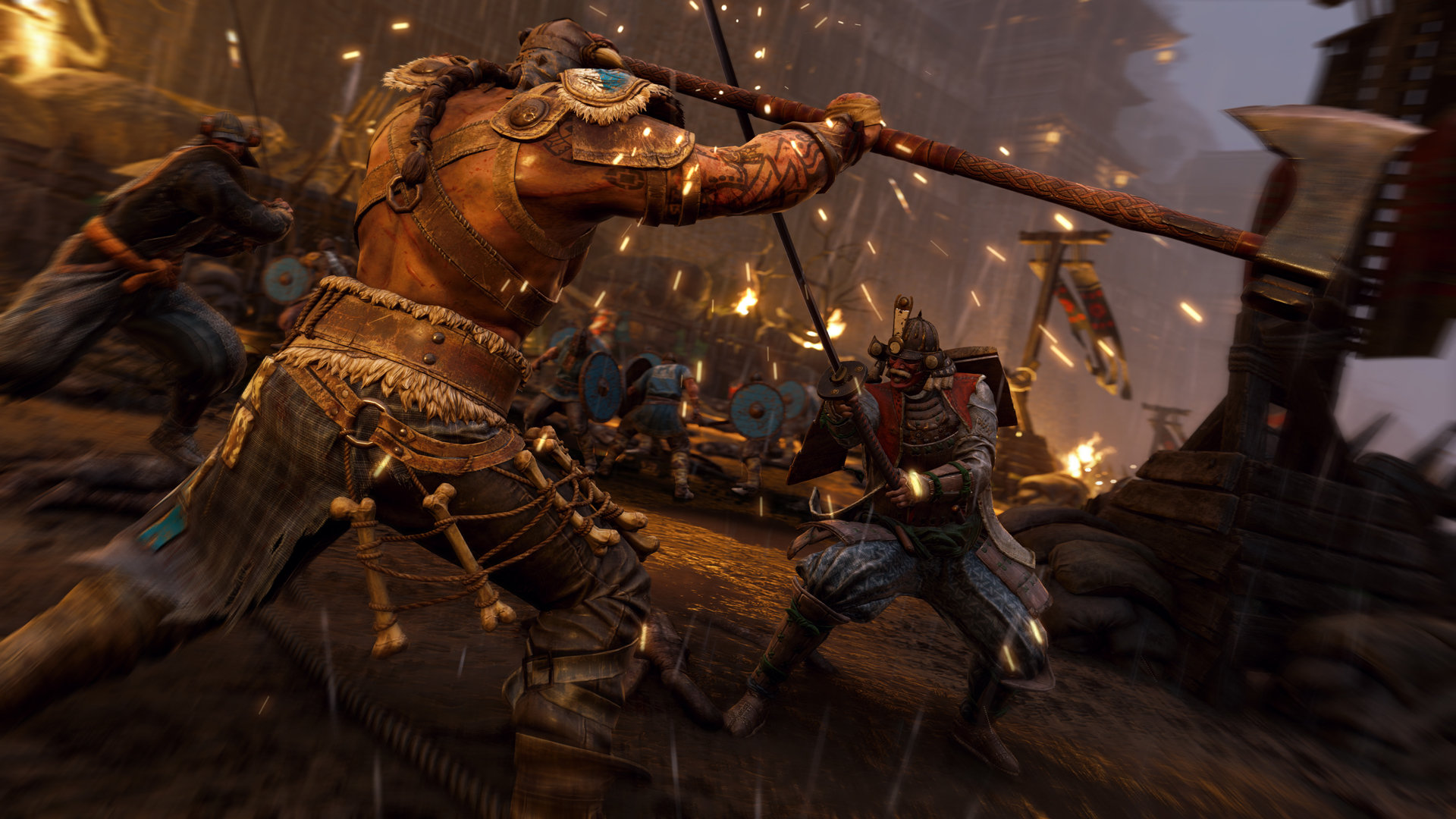
Want to get a glimpse of For Honor in action? We've got you covered.
-
For Honor Trophy List
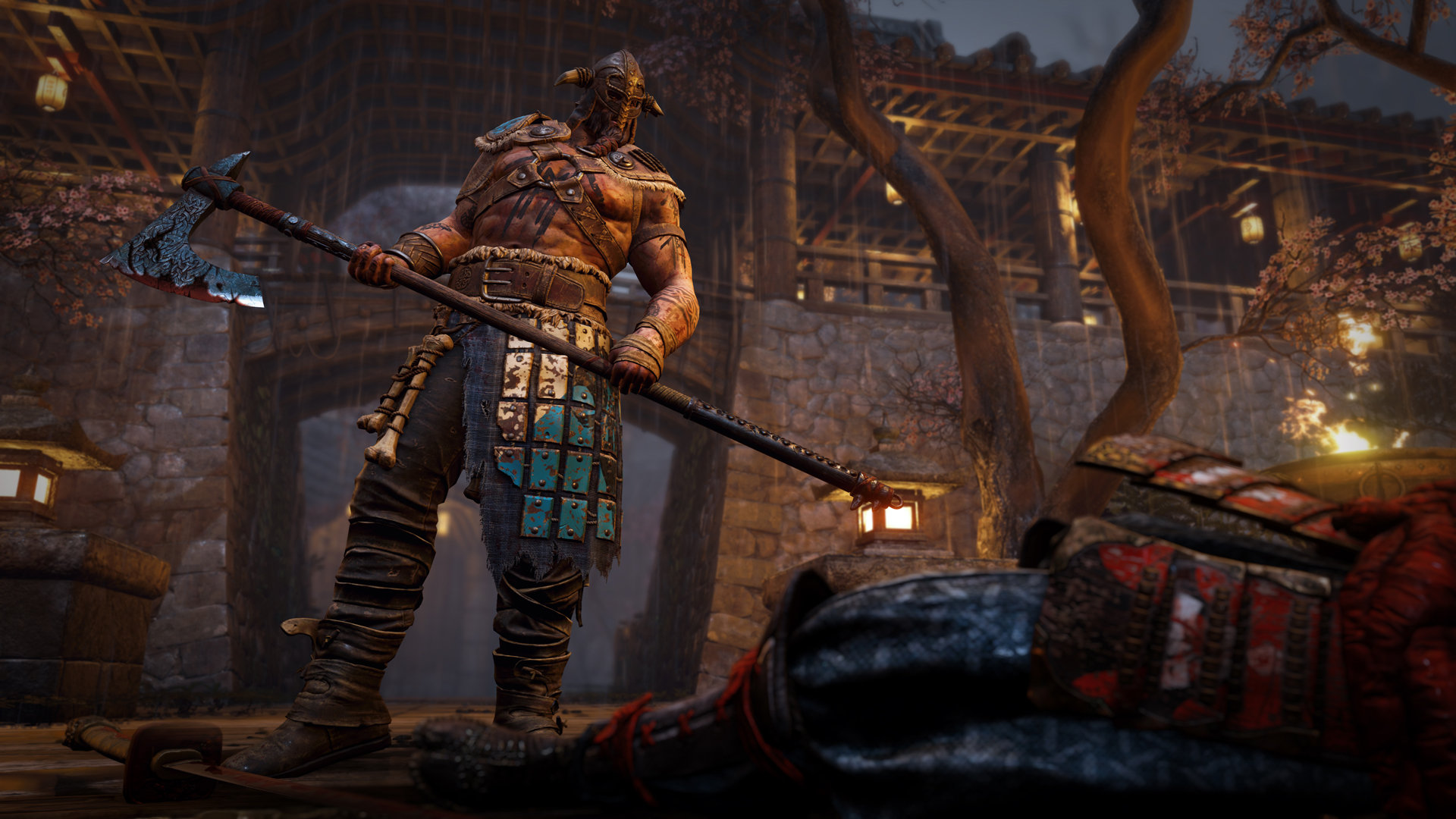
Comprised of 55 accolades in total, For Honor's Trophy list includes two Gold, six Silver, 46 Bronze and of course, that all important Platinum.
-
Beta Preview
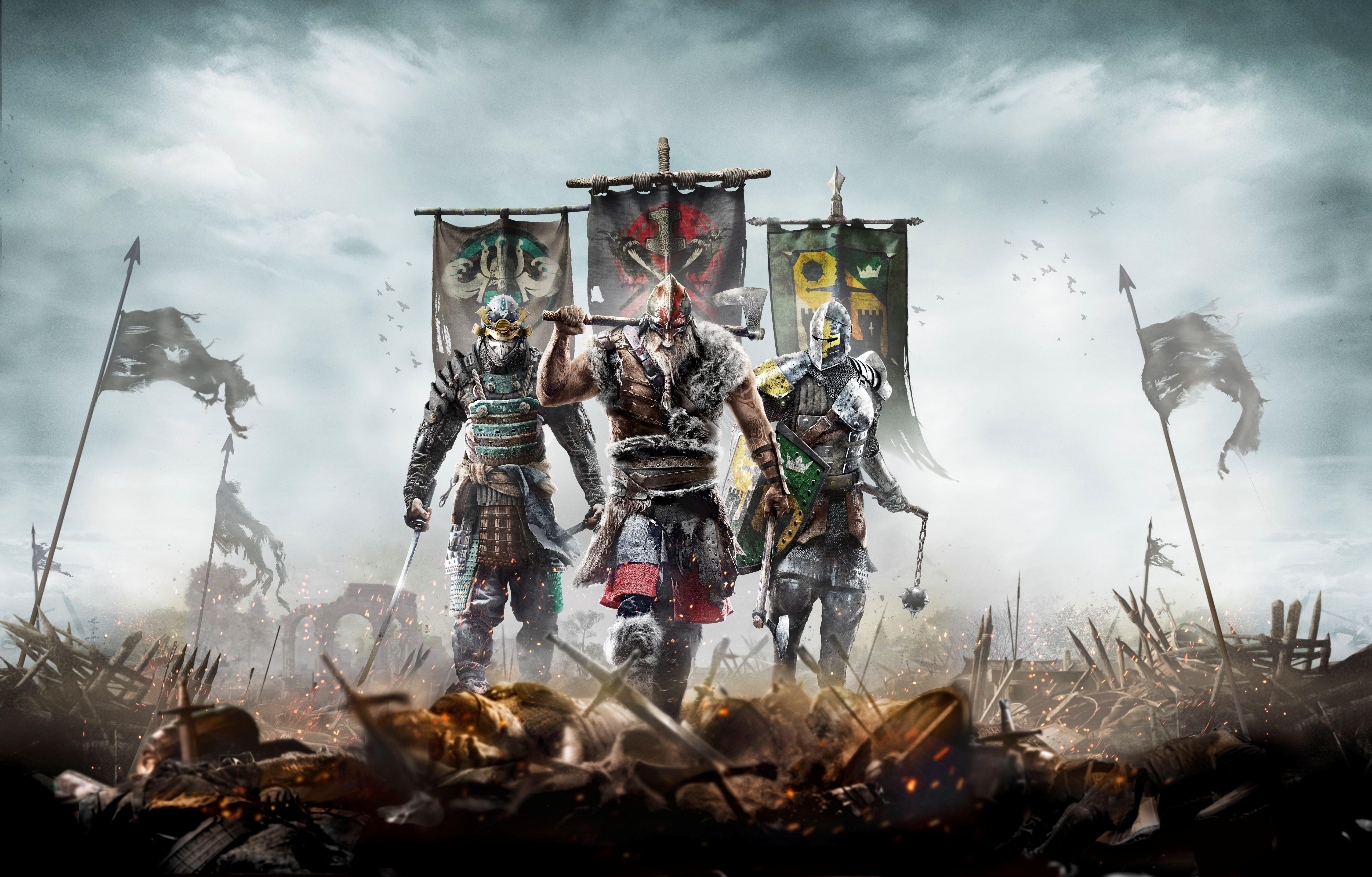
Tyler Treese flew the flag for PSLS during For Honor’s recent closed beta test and, once the dust settled, left largely impressed. Said he:
“I’ve only spent a few hours with For Honor, but I’m pretty impressed with what I’ve seen so far. I do find it a bit strange that multiplayer teams can pick warriors from any of the three factions, as it killed the idea of seeing a whole army of knights fight a group of samurai. Still, it’s probably for the best that players aren’t restricted in what character they can pick, as each has different types of attacks and abilities that can be equipped.”
-
Our Final Verdict
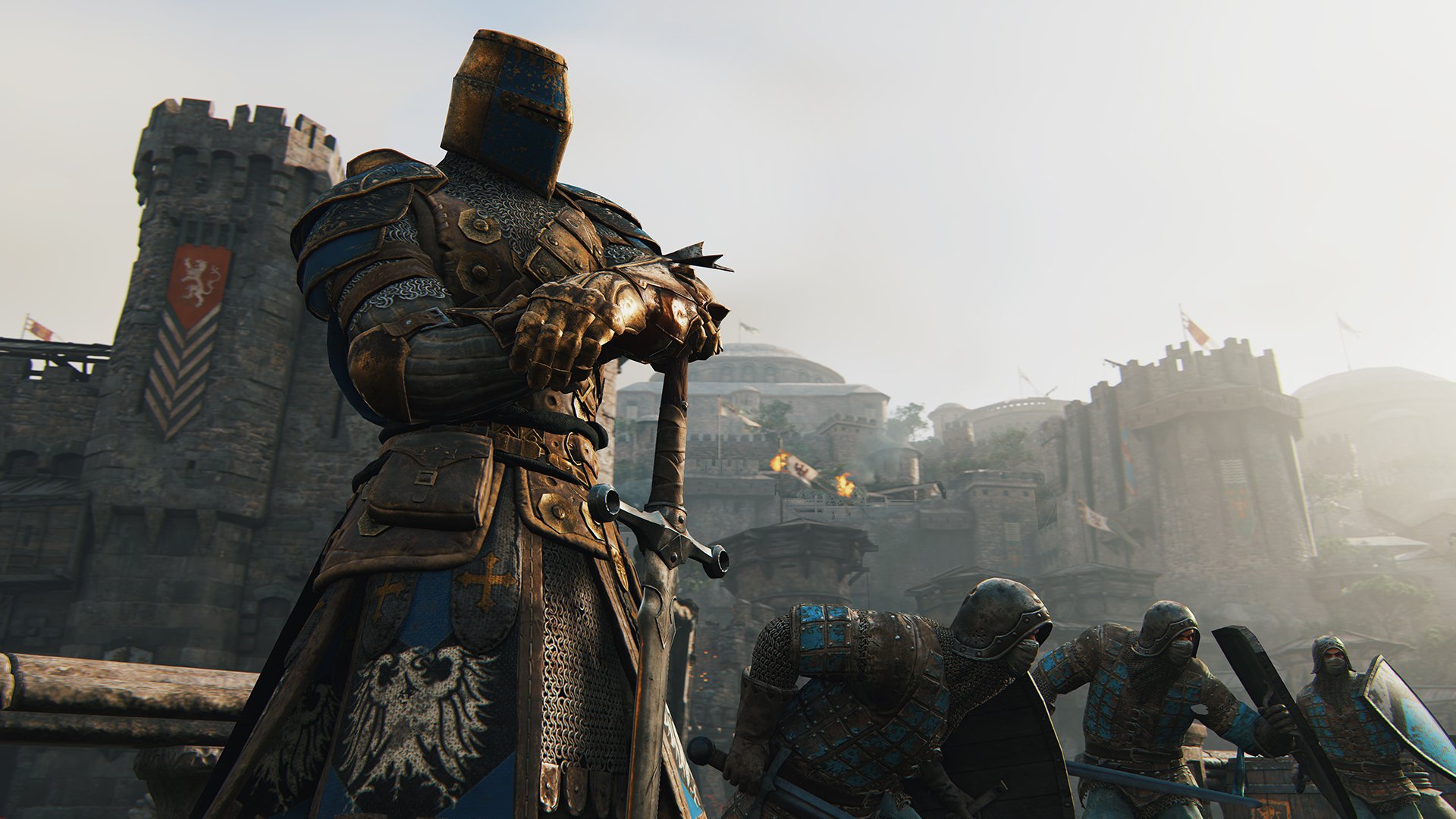
Due to the game's online nature, coupled with the last-minute Open Beta test, For Honor review copies won't be distributed until the game's launch on February 14.
Tyler Treese will be handling the review for PSLS.
